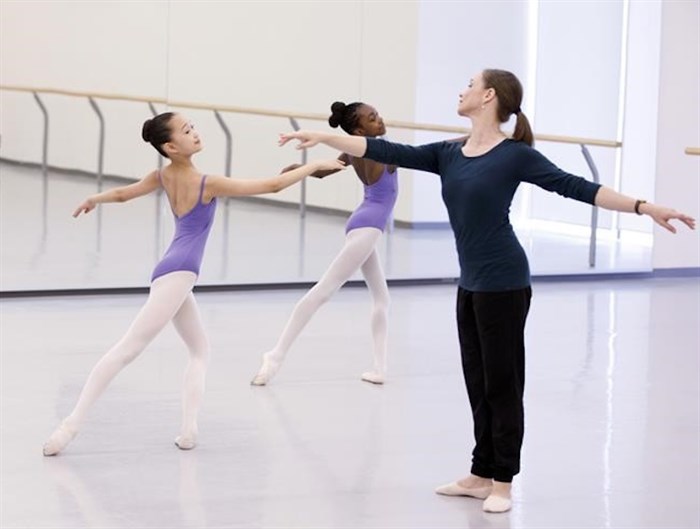
Professional Ballet-Academic Program students in class in 2019 at Canadas National Ballet School in Toronto.
Image Credit: THE CANADIAN PRESS/HO-Canada's National Ballet School-Bruce Zinger
October 13, 2020 - 8:00 AM
Canada's National Ballet School found itself facing some unique challenges as it prepared to launch its audition process this month amid a global pandemic.
For 60 years it has recruited students using the same method of cross-country auditions beginning in October. Now, that's out the window.
"I have been involved in this audition process for three decades. It's a significant change," said Mavis Staines, the schools artistic director.
"But I think one of the things that I found especially energizing is that, as we head into this experience, we all looked at one another and said let's turn every challenge into an opportunity and a way to refresh and reboot."
Under normal circumstances, representatives would travel across the country to see upward of 1,000 prospective students dance for about 50 spots. About 150 would be selected to participate in a four-week summer intensive at the school and then the final candidates would be chosen.
Executive director John Dalrymple said the school's leadership team realized another door was opening, as they tested a pilot for auditioning students via Zoom. A digital model could make the school more accessible, he said.
"I think we may get an opportunity to see more kids than we normally would, which is exciting," he said.
It's one of many ways the school is adapting and transforming in the pressure cooker of the pandemic.
Grade 12 student Maya Smallwood said it has been an adjustment returning to school with physical distancing measures in place.
Like other students, Smallwood is restricted to seeing only the students in her dance bubble. She and 10 others train and rehearse together but they take academic classes via Zoom, even if they live on campus, to reduce their contacts with anyone else.
Smallwood, who is from St. Louis, returned to the United States when the pandemic struck and trained from home with digital support. Now that she's back in Toronto it could be a while before she sees her family again.
"It's a little tough, especially with how things are playing out right now in the United States," she said. "I really don't see in the near future going home any time soon."
Smallwood is set to graduate into a performance landscape that has been severely altered. At this stage, she said she's staying optimistic.
"I think we've been working a lot on adaptability and making the best of all these challenges and all the change that is happening, so I'm really confident that wherever we end up at the end of this year, we'll have worked the hardest and made the best of the situation," she said.
Former student Gabriel Buell, who uses the pronouns they/them, feels lucky to have completed auditions for professional companies before the pandemic and graduation.
Buell is now an apprentice with the National Ballet of Canada, which has also had to adapt to COVID-19 conditions and introduced its first digital season. It began last month with a series of solo performances rehearsed and filmed during lockdown.
When the pandemic struck, Buell said it was tough not to be able to train in studio but it also forced dancers to go back to the basics.
"I think not having performances to look forward to sort of allowed us for the time to go a little bit slower and get back to our more basic training elements — to refine our technique and become stronger and better dancers," Buell said.
In April, Buell was part of a collaborative video project with six other schools around the world led by the Royal Ballet School and choreographer Didy Veldman. More than 100 students from 23 countries were grouped by time zone and trained with Veldman via video.
The project explored the theme of physical restriction and Buell recorded phrases in the confines of their home, including the living room and bedroom.
"I think that with the pandemic and looking for other possibilities to create video kind of showed itself as a creative medium used for dance."
It was different receiving feedback from someone who isn't there in person, Buell said.
"It's a more introspective experience asking yourself if what you're doing is right, rather than constantly looking to somebody else for the answer."
It's an interesting place to be, looking at such an uncertain future, Buell said. The ability to constantly adapt is vital to a career in dance because anything could go wrong on stage and you have to respond nimbly.
Pushing the whole discipline outdoors and into the video world may end up being an opportunity to push dance to new places creatively too.
"Instead of being concerned for what the future of dance could be and if it's doomed because we can't get back in the theatre, I think I'm more excited thinking about what is new, what can dance become because of this new limitation. And what is possible," Buell said.
This report by The Canadian Press was first published Oct. 8, 2020
News from © The Canadian Press, 2020